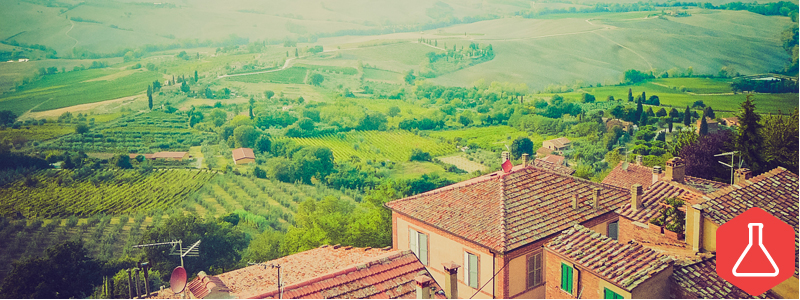Owning an Italian restaurant and wine bar, I see a lot of anxious eyes darting up and down and all around the pages of my wine list. OF COURSE! Italy is a very daunting place for vino. There are twenty regions on the boot and each region is its own “country” of food and wine. There are beautiful bottles to be had from every appellation, but guidance is often needed. And man, do we love guiding peeps. In my little wine cave in the East Village of Manhattan you’ll usually hear me or one of my staff members waxing on and off and giving diners comfort and confidence, clearing up confusion and demystifying wines people want to love and enjoy but just don’t understand. The smile of satisfaction on their faces after they understand and are able to drink every sip of that bottle knowing something special about it is like nothing else.
So I decided to start a little series running every once in a while here on Wine Geekly in which, every time I experience one of these moments, I’ll get it down and spread the love. So let’s get down to business.
There are two places on an Italian wine list you’ll see reference to Montepulciano. One is a town and the other is a grape. It’s a bit confusing. But not for long. I’m here to clear up the murkiness.
Most Americans who travel to Italy spend the majority of their time in central Italy, the most visited part of the country. Taking up a large part of that real estate is one of the most famous wine regions in the world, Tuscany. This is where the Chianti hills are located and the legendary wines of the same name are made. But just thirty minutes southeast of Chianti is a town that causes a bit of confusion when peeps get back to the States: the town of Montepulciano. In and around this town they make a wine that has been celebrated throughout its history and even given the title of “noble,” Vino Nobile Di Montepulciano. These wines are mostly made from one hundred percent Sangiovese grapes (here they call the Sangiovese grape Prugnolo Gentile), grown in low lying vineyards with a good amount of fertile soil; these elements produce soft, earthy red wines with wafts of forest floor and a hint of dried fruit. Wines from here hold on to a classic style of Tuscan wines, with slightly rough edges and less tartness than what’s found in the Chianti examples. They are some of the best food pairing wines out there. Retail these bottles will run you just under twenty bucks.
But here is where the confusion sets in. In central Italy, there is a region southeast of Tuscany that quietly hugs the Adriatic Sea called Abruzzo. Sangiovese grows there as well, but it’s not the star. The spotlight here is the grape named Montepulciano. And the official name granted by the appellation is Montepulciano d’Abruzzo. These are some of the best value wines in all of Italy. Soft, meduim-bodied, ripe red with a hint of soil and bright berry fruit, wines made from the Montepulciano grape are the best go-to on the low-end price of a wine list. That being said there are definitely a few examples of high-end Montepulciano from winemakers like Emidio Pepe that go for around $100 on a list and do away with the ripeness and instead bring in the soulful earth notes. Abruzzo is the ultimate home for this late ripening grape where the less fertile soil of clay, sand and limestone give the resulting wines their medium depth.
So, we have a town by the name of Montepulciano that makes a wine from the Sangiovese grape, which they call Prugnolo Gentile, and a region by the name of Abruzzo that makes a wine from the Montepulciano grape. Nice and confusing, but now you know the difference. So next time you’re looking at an Italian wine list and are looking for that bottle you had when in Tuscany named after that beautiful fortified town you frolicked through, it’s in the Tuscan section. But don’t forget about that really well-priced bottle on the list that says Montepulciano d’Abruzzo, which is probably all kinds of awesome, food friendly and hails from the eastern coast region of Abruzzo. Wine love minus murky equals clarity. ENJOY!

